Real Women and Unreal Feminists
Published on March 30th, 2011 in: Back Off Man I'm A Feminist, Editorial, Issues |A recent article in The Daily Mail called 20-year-old ethereally androgynous fashion model Andrej Pejic, “fashion’s ultimate insult to women.” The Daily Mail is not heralded for its “unique” approach to journalism, but ignorance—particularly with regard to gender issues—must always be exposed and called out for exactly what it is.
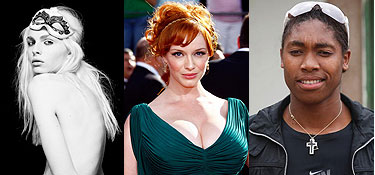
Writer Amanda Platell blames the fashion industry for the “defeminsation” of women, stating early on that, “[r]eal women started to love their curves long before Christina Hendricks wowed the world in Mad Men with hers. And by all accounts men love them, too.” Even a brief unpacking of such bold statements would take far too long, so I’ll hit the high notes: Who or what are “real women” exactly? And why is it so important that men love curves?
(more…)
The Mistress And The Maid: Mildred Pierce
Published on March 30th, 2011 in: Back Off Man I'm A Feminist, Books, Culture Shock, Feminism, Issues, Movies, Teh Sex, TV |By Less Lee Moore
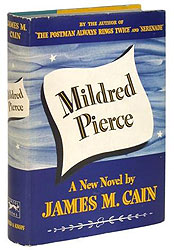
When I learned of the Mildred Pierce miniseries—directed by Todd Haynes and airing on HBO—I was thrilled. I’ve been a longtime fan of the novel and film, as well as of Haynes. Then I started to second-guess my excitement.
Would another male-directed version of this story merely intensify the story’s “male gaze”? Furthermore, should I revere Mildred Pierce as a feminist text when the original novel was written by one man (James M. Cain) and first captured on screen by another (Michael Curtiz)?
(more…)
Those Boots Aren’t Made For Walking: Wonder Woman Reimagined
Published on March 30th, 2011 in: Back Off Man I'm A Feminist, Comics, Feminism, Issues, TV |By AJ Wood
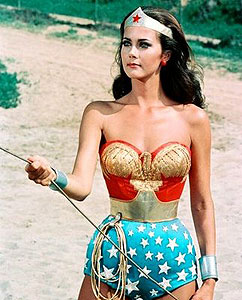
Lynda Carter as Wonder Woman
I remember little of my childhood, especially anything before age eight or nine, but one memory I do have from age four or five was Wonder Woman. Stripped down to my red and blue briefs and a red T-shirt tucked into them, with a lasso of kite string at my side, I felt wise as Athena, fast as Hermes, and stronger than Hercules. I had to imagine the boots, bracelets, and tiara, but the costume was close enough.
(more…)
The Women Behind The Whedonverse
Published on March 30th, 2011 in: Back Off Man I'm A Feminist, Feminism, Gaming, Horror, Issues, Magick, Movies, Science Fiction, The Internets, TV |By Lisa Anderson
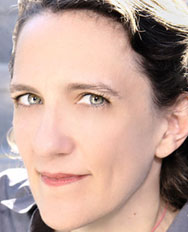
Even casual fans of Joss Whedon know that strong female characters are important to him. Buffy the Vampire Slayer, Echo from Dollhouse, and Zoe from Firefly are only a few examples. What casual fans may not realize is that women behind the scenes—Whedon’s fellow writers and producers—have also helped make his storylines beloved to so many fans. They include Jane Espenson, Marti Noxon, Maurissa Tancheroen, and Felicia Day.
(more…)
We Can Do It (Better): The Women Of The Mercury Program, The “Mercury 13”
Published on March 30th, 2011 in: Back Off Man I'm A Feminist, Feminism, Issues, Science and Technology |By Emily Carney

Jerrie Cobb, test pilot, stands next to a Mercury capsule.
I was born in 1978, and it is difficult for me to believe that in the late 1950s and early 1960s, the world was still rife with prejudices based on race, ethnicity, and gender. I joined the US Navy in 1997, and was sometimes exposed to painful instances of discrimination based upon my gender and general appearance. It is very upsetting to come to the realization that people may dislike you and prevent you from doing your job based on something you can’t change.
(more…)
“Seductive Subversion: Women In Pop Art”
Published on March 30th, 2011 in: Art, Back Off Man I'm A Feminist, Current Faves, Feminism, Issues |By Chelsea Spear
Exhibit at The Aidekman Center for the Arts
Medford, MA
Free association: When I say the words “Pop Art,” what comes to mind? Screen-prints of Brillo boxes and Campbell’s soup cans, Ben-Day dots on comic-strip women, cartoon collages. And pop artists? Andy Warhol, Roy Lichtenstein, Richard Hamilton, maybe Jasper Johns and Robert Rauschenberg. Like most art movements, Pop Art is considered to be a boys’ club. “Seductive Subversion” seeks to turn this misconception on its head.
(more…)
Beyond Twilight: Stephenie Meyer’s The Host
Published on March 30th, 2011 in: Back Off Man I'm A Feminist, Book Reviews, Books, Feminism, Issues, Movies, Science Fiction |By Lisa Anderson
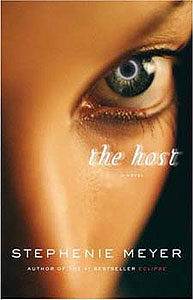
Stephenie Meyer: Few writers have ever had their work loved and hated so deeply at the same time.
Her Twilight series, consisting of four novels and a novella, has sold over 100 million copies worldwide and been translated into 38 languages, as well as being adapted into a film saga that is set to conclude this year. Meyer has a wide variety of critics, from vampire purists who resent the liberties she has taken with the lore, to feminists who find the relationship between her romantic leads unhealthy. In all the hubbub, though, you hear almost nothing about Meyer’s other brain child: A science fiction novel called The Host which was released in 2008.
(more…)
Portrait of a Reputation: The Woodmans
Published on March 30th, 2011 in: Art, Back Off Man I'm A Feminist, Documentaries, Feminism, Issues |By Chelsea Spear
The early months of 2011 find artist Francesca Woodman in the spotlight. After numerous solo shows throughout the United States and Europe, the photographer will be the subject of a career retrospective at the San Francisco Museum of Modern Art. Her work changes hands for hundreds of dollars. Established photographers like Cindy Sherman and Photoshop illustrators such as Rosie Hardy cite Woodman’s ethereal self-portraits as a key influence.
(more…)
Excellence (Still) Has No Sex: A Tribute To Artist Eva Hesse, 1936 – 1970
Published on March 30th, 2011 in: Art, Back Off Man I'm A Feminist, Feminism, Issues |By Emily Carney
“You won’t believe it. I was told by the doctor that I have the most incredible life he ever heard. Have you got tissues? It’s not a little thing to have a brain tumor at thirty-three.”
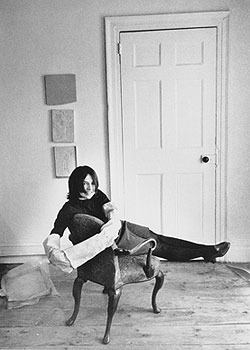
Eva Hesse
This was just the beginning of an interview artist Eva Hesse conducted with Cindy Nesmer near the end of her life. The tumult—and ultimate artistic triumph—of Eva Hesse’s inner life was more than apparent in the three-dimensional latex and plastic sculptures which she made near her life’s end.
(more…)
In Defense Of Elizabeth Gilbert
Published on March 30th, 2011 in: Back Off Man I'm A Feminist, Books, Culture Shock, Feminism, Issues, Over the Gadfly's Nest |By Lisa Anderson

Elizabeth Gilbert seems to be a rather divisive literary figure. Her 2006 memoir, Eat, Pray, Love told the story of the year she lived abroad after her first marriage ended. It spent almost two hundred weeks on the New York Times bestseller list, and was praised by Oprah Winfrey. At the same time, it received a lot of criticism in the blogosphere. The gist of the criticism is that many people have problems starker than Gilbert’s, that very few people have the resources to travel for a year as she did, a and that to use other countries as the backdrop for her personal salvation was imperialist at best, racist at worst.
I don’t think that any writer is above criticism, and I’m not trying to silence anyone. I certainly agree that racial and cultural sensitivity are important. However, a lot of what I’ve heard said about Gilbert misses the point of her work, and some critiques are quite sexist. I’d like to point out a few of the things that I’ve heard and explain why I don’t believe they apply.
(more…)